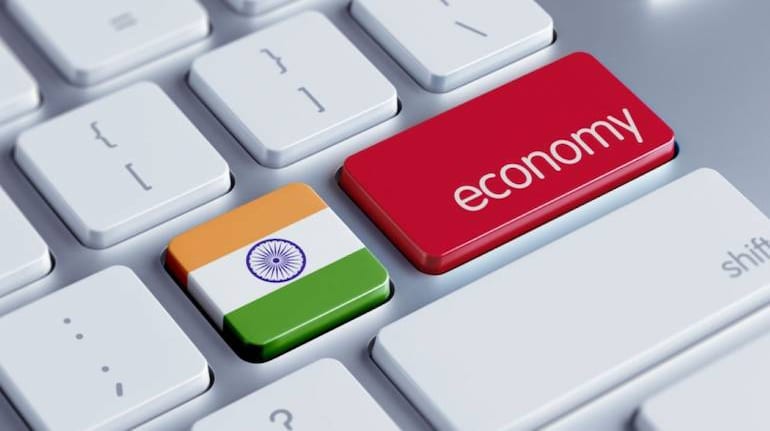



As India celebrates the 77th year of its hard-fought Independence, the world witnesses a nation transformed – one that has defied the odds, surpassed expectations, and emerged as a force to reckon with, globally. Today, India stands tall as one of the fastest-growing economies and among the best performing markets in the world. This remarkable evolution is a result of various initiatives and policies that have shaped India’s trajectory.
The White Revolution propelled India to the status of the largest producer of milk, while the Green Revolution helped in achieving surplus in food grain production. Further, India has established its prowess in IT services globally and the Digital India initiative has increased the adoption of technology in the country. A thriving spirit of entrepreneurship has led to creation of 100+ unicorns, with a total valuation of $340.8 billion.
India’s space and satellite program – including the recent launch of Chandrayaan-3, its strides in clean energy, and its peaceful nuclear status reaffirm the nation’s dedication to scientific and strategic advancement. Moreover, a robust foreign policy has helped it nurture global partnerships. Not surprisingly, India assumed the presidency of the G20 forum in 2022 and is also a worthy contender for a permanent seat at the UN Security Council.
Looking ahead, I firmly believe that this is India’s Golden Decade or the ‘Amrit Kaal’ as referred to by the Honourable Prime Minister Narendra Modi. As we move towards our collective dream of becoming a developed nation by 2047 (100th year of independence) – here’s a look at the factors fuelling this growth.
Economic & Income Growth
Till the 1980s, the GDP growth rate was ~3.5 percent. However, the liberalisation reforms in 1991 led to the end of the License Raj and start of a market-driven economy. This propelled GDP growth to double the earlier rate. In FY23, our GDP rose by 7.2 percent to hit $3.7 trillion. With these reforms, the per capita income (PCI) also surged to $2,450 in FY23 from $369 in 1990.
As per current projections, our economy will cross the $7 trillion mark and PCI will hit $4,000 by 2030. This will be aided by strong domestic consumption, global supply-chain realignment, infra & manufacturing push, and favourable policies.
Financialisation of Savings
India's financial evolution mirrors its economic stride. The journey from physical stock trading to digital platforms has revolutionised investment. This, coupled with investor awareness initiatives, robust regulations, financial inclusion, and access to banking channels, has led to a surge in equity investment.
Retail investors are flocking towards the markets, leading to record-high demat account openings. This, coupled with market capitalisation exceeding $3.5 trillion in 2023, underscores an ever-increasing confidence in India's potential. The trend of financialisation of savings is expected to continue, given the low single-digit penetration of financial services in India.
Foreign Capital
India's relentless pursuit of economic growth has attracted substantial FDI and FII inflows. A conducive policy landscape, diverse corporates, burgeoning startup ecosystem, and fast-growing middle class have positioned India as a prime investment destination. Initiatives like GIFT IFSC and enabling domestic companies to directly list on its exchanges will further amplify foreign capital inflows.
Demographic Dividend
A demographic advantage further propels India’s growth, with a young population poised to drive consumption, production, investment, and economic acceleration. The working age population is expected to exceed 1 billion by 2030. This demographic trend, combined with India’s median age remaining significantly lower than other major economies, positions the nation for sustained growth.
Robust Policies
India's acceleration is fuelled by strategic initiatives, such as Atmanirbhar Bharat, turning the nation into a manufacturing hub. Additionally, the Production Linked Incentive (PLI) scheme's transformative impact, real estate and infrastructure impetus, and financial innovations like UPI, ONDC, and OCEN demonstrate our focus on growth, adaptability, and innovation.
Going Green
India is now the 3rd largest producer of renewable energy in the world and has the potential to emerge as a green energy hub. Ambitious targets have been set to reduce carbon emissions, increase renewable energy adoption and develop Green Hydrogen. Investments from foreign investors and Indian conglomerates have started pouring in. The estimates suggest that India’s green energy sector could attract investments worth Rs 800 billion over the next decade.
In just 76 years, India has created an inspiring narrative of progress and transformation. Guided by comprehensive reforms, India has embarked on a multi-decadal growth path. This rekindles the spirit of the “Sone ki Chidia,” the Golden Sparrow. With every stride forward, India paints a picture of growth, resilience, and promise – its immense potential now earning the rightful spotlight on the global stage.
Disclaimer: The views and investment tips expressed by investment experts on Moneycontrol.com are their own and not those of the website or its management. Moneycontrol.com advises users to check with certified experts before taking any investment decisions.
Discover the latest Business News, Sensex, and Nifty updates. Obtain Personal Finance insights, tax queries, and expert opinions on Moneycontrol or download the Moneycontrol App to stay updated!
Find the best of Al News in one place, specially curated for you every weekend.
Stay on top of the latest tech trends and biggest startup news.